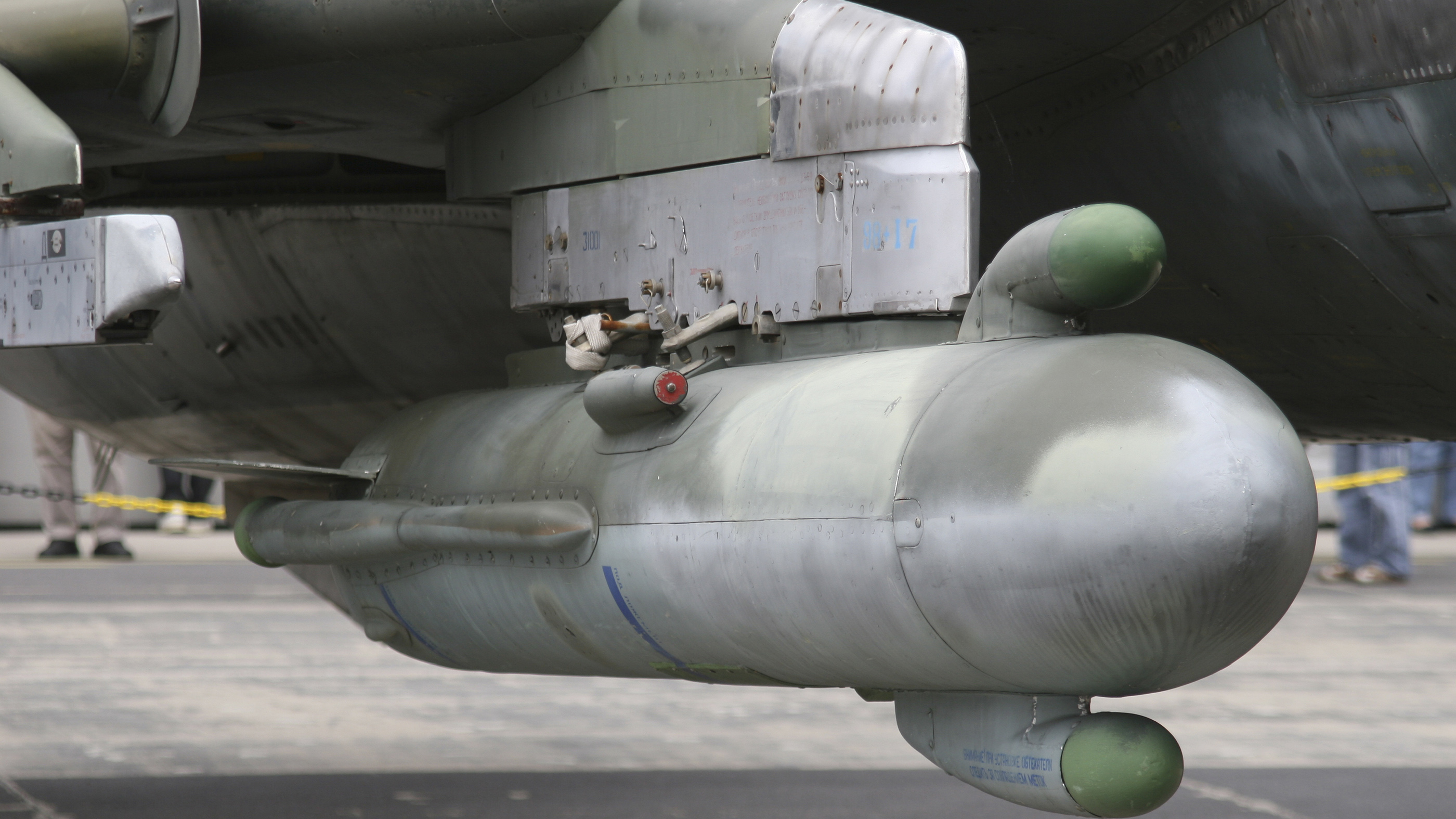US Navy sends 'electronic attack' jets to Germany: Here's how they work.
Why radar jamming gives combatants such an advantage.

The United States has deployed six "electronic attack" aircraft to northern Europe, adding to its military forces in the region after Russia's invasion of Ukraine. They are designed to overcome enemy air defenses by crippling the radar systems that they often depend upon, giving friendly aircraft a substantial combat advantage.
The six fighter jets – EA-18G Growlers – are equipped to carry out a variety of missions, but they specialize in what's called electronic warfare – principally the jamming of enemy radar with a flood of radio-frequency waves to suppress air defenses, according to Pentagon spokesperson John Kirby.
The U.S. Navy announced Monday (March 28) that the Growlers will arrive Tuesday (March 29) at Spangdahlem Air Base in the northwest of Germany, along with 240 U.S. air crew and aircraft maintainers.
Kirby told reporters that the jets will not be carrying out any specific jamming missions, but they are being deployed as part of the defense department's recent decision to strengthen its forces in the region.
"They are not being deployed to be used against Russian forces in Ukraine," Kirby said in a statement. "They are being deployed completely in keeping with our efforts to bolster NATO's deterrence and defense capabilities along that eastern flank."
Related: Russia strikes Ukraine with new hypersonic missiles: Here's how they work.
The Growlers add to the existing U.S military force of fighter jets, attack helicopters and infantry battalions that have been deployed in Germany, Poland and Hungary since February – a total mobilization of about 11,800 troops, according to the independent Military Times website.
Get the world’s most fascinating discoveries delivered straight to your inbox.
"They are being deployed, as we have said all along, [because] the secretary wants to keep options open," Kirby said. "As a result of discussions … this was deemed to be an additional move that could continue to bolster and reinforce our defenses."
Electronic warfare
The six EA-18G Growler jets are from VAQ 134, an electronic attack squadron of the U.S. Navy known as the Garudas, according to the DoD statement. They are usually based at Naval Air Station Whidbey Island in Washington's Puget Sound.
A Navy fact sheet records the EA-18Gs are variants of the F/A-18E/F "Super Hornet" fighter jets; but they've had the Super Hornet's internal 20mm cannon taken out and replaced with electronic warfare equipment. They also have nine external weapons stations that can be fitted with missiles or pods with additional electronic jamming equipment.
The electronic warfare systems on the Growlers are designed to jam enemy air defense radars by swamping the radio frequencies they use with noise or false information.
Air defense radars emit thousands of radio pulses each second that can reflect off enemy aircraft; the radar information can then be used to accurately launch surface-to-air missiles at them from hundreds of miles away.
But the missiles can’t work if the air defense radar systems are jammed, disrupted or destroyed.
There are also several different types of air defense radar system, and the electronic warfare equipment on the Growler is designed to deal with whatever it encounters.
In addition, different types of countermeasures can be used to prevent air defense radars from being jammed during electronic attacks, and the Growler’s equipment is designed to overcome these.
Deterrence and defense
The effective range that the Growlers can jam the radio frequencies used by enemy air defense radars, and details of exactly how they do it, are closely-guarded secrets.
As well as jamming, the Growlers' electronic warfare systems are also capable of identifying and finding the direction of enemy air defense radars, and passing that information on automatically to friendly combatants.
The jets are also typically equipped with anti-radar missiles that can home in on the radar transmissions of enemy air-defenses and destroy them; and with medium-range air-to-air missiles for defense against enemy fighter jets.
Navy Capt. Christopher Bahner, the commander of Electronic Attack Wing Pacific — the subdivision of the U.S. military where the newly-deployed Growlers are based — said they would allow other EA-18G's based on aircraft carriers to remain at sea to defend an aircraft carrier and the warships deployed with it.
Bahner didn't specify, but one U.S. aircraft carrier, the U.S.S. Harry S. Truman, was deployed to the northern part of the Aegean Sea early this month, along with supporting warships in its strike group.
Its commanders have declared the strike group capable of "supporting NATO enhanced Air Policing missions, bolstering the defense of the NATO Alliance."
Kirby said it would be up to the U.S. European Command whether or not the newly-deployed EA-18G Growlers will fly "presence" missions in the border regions of NATO countries, such as Poland and Lithuania, as U.S. F-35s deployed to the Baltic since February have done.
Originally published on Live Science.
Tom Metcalfe is a freelance journalist and regular Live Science contributor who is based in London in the United Kingdom. Tom writes mainly about science, space, archaeology, the Earth and the oceans. He has also written for the BBC, NBC News, National Geographic, Scientific American, Air & Space, and many others.



